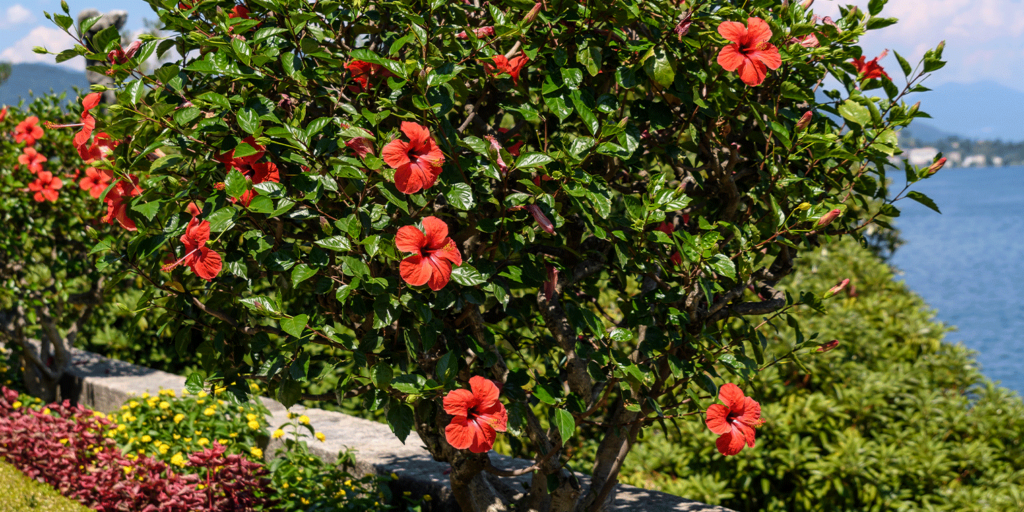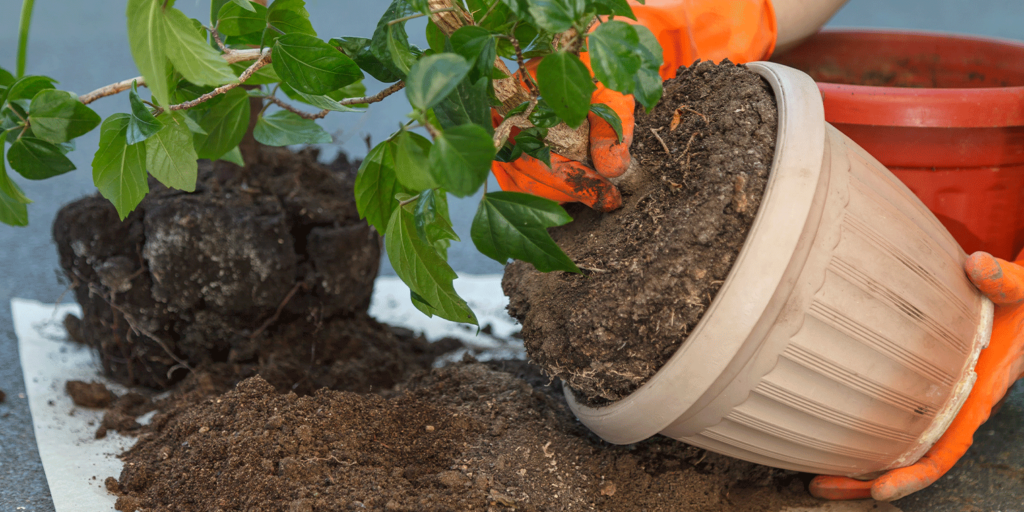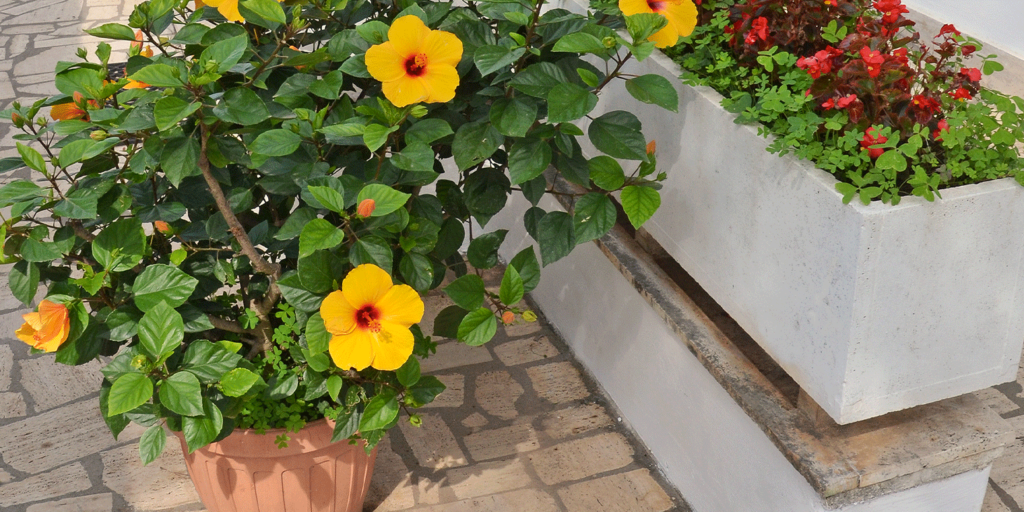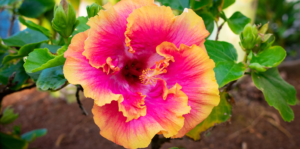Hibiscus: the tropical perennial that is both beautiful to look at and delicious to taste! In recipes ranging from floral-infused cocktail syrups to healthy hibiscus-infused teas, the hibiscus flower is the gift that keeps on giving to your summer beverage game. Here’s how to grow hibiscus flowers at home!

Are Hibiscus Flowers Easy to Grow?
Hibiscus flowers require well-drained soil and full sunlight to grow successfully. Luckily, there’s no shortage of that in Southern Florida! These sun-loving flowers are surprisingly easy to grow, with hardy varieties like roselle hibiscus and cranberry hibiscus being the easiest to maintain. A sure and stress-free way to add a tropical feel to your garden, you can’t go wrong with this gorgeous backyard flower!
Hibiscus Soil
Hibiscus plants are pretty versatile regarding their soil needs, but as mentioned, they love good, moist, well-drained soil. To make things easier on yourself, you can purchase a generic potting mix suited solely for hibiscus flowers. Add in some compost at the time of planting so that you offer your plants a well-balanced pH soil between 5.8 and 6.5. Fertilize every two weeks in the growing season with liquid fertilizer or every eight weeks with a slow-release fertilizer.

How to Plant Hibiscus
It’s no doubt that your hibiscus plant loves the sun like nothing else, but during the hottest parts of the day, it may still need a little bit of shade. Hibiscus plants grow better in the ground than in containers and should ideally be planted along or at the end of your flower beds to ensure they stand out in your garden—not that they’ll have any trouble getting noticed! Plant hibiscus during the spring, summer, and fall months, and place your plants deep enough in the ground so that their stems are level with the surface of your soil. Water your hibiscus deeply during the early stages of planting to keep the soil moist. Purchasing young plants from your local Fort Lauderdale nursery is a good option if it’s your first time growing, or you can start straight from seedlings! For many types of hibiscus, you should wait until after the plant blooms before harvesting.
Hibiscus Watering Care
For the first few weeks after planting, all hibiscus plants need is to be watered thoroughly every couple of days. Over the following year, you will want to water your hibiscus plant twice weekly. You should water once per week during the plant’s second year and beyond. That being said, that famous Fort Lauderdale heat can take a toll on freshly planted plants, so keep an eye on the soil around your hibiscus to ensure it’s kept moist and hydrated but not soggy. Stick your finger a few inches below the soil surface to make sure your soil is still moist under its surface. A layer of mulch over the planting area will help protect its roots and keep the soil hydrated. Your hibiscus flower will let you know it’s receiving too much water when it begins to appear wilted and display discolored yellow leaves. Brown roots that smell bad may also be a sign of overwatering.

How To Grow Hibiscus In Containers
While hibiscus flowers prefer beds over containers, growing them in pots isn’t too different from growing them in the ground. In pots, hibiscus plants actually prefer to be a little rootbound, so a smaller container with drainage holes will work best. As mentioned, the soil must be acidic for both container-grown and in-ground hibiscus plants. Furthermore, with less soil around the roots, keeping your potted hibiscus hydrated and fertilized is the key to success.
Can Hibiscus Be Grown Indoors?
While hibiscus thrives best outside in the Fort Lauderdale sun, these perennials can also be grown indoors! The gorgeous tropical foliage of hibiscus plants is also a sure way to add vivid beauty to the inside of your home and liven up the room. Place the plant in an area with lots of sunlight and optimal humidity. Reduce your watering schedule once the plant stops flowering and slowly up the frequency when growth speeds up. Some container-grown tropicals like angel’s trumpet, croton, mandevilla, and hibiscus do well if you bring them inside for the winter.
Creating beauty inside your backyard is simple with a rainbow of hibiscus flowers. Visit us at Living Color Garden Center in Fort Lauderdale today to explore the amazing hues of these breathtaking flowers!

